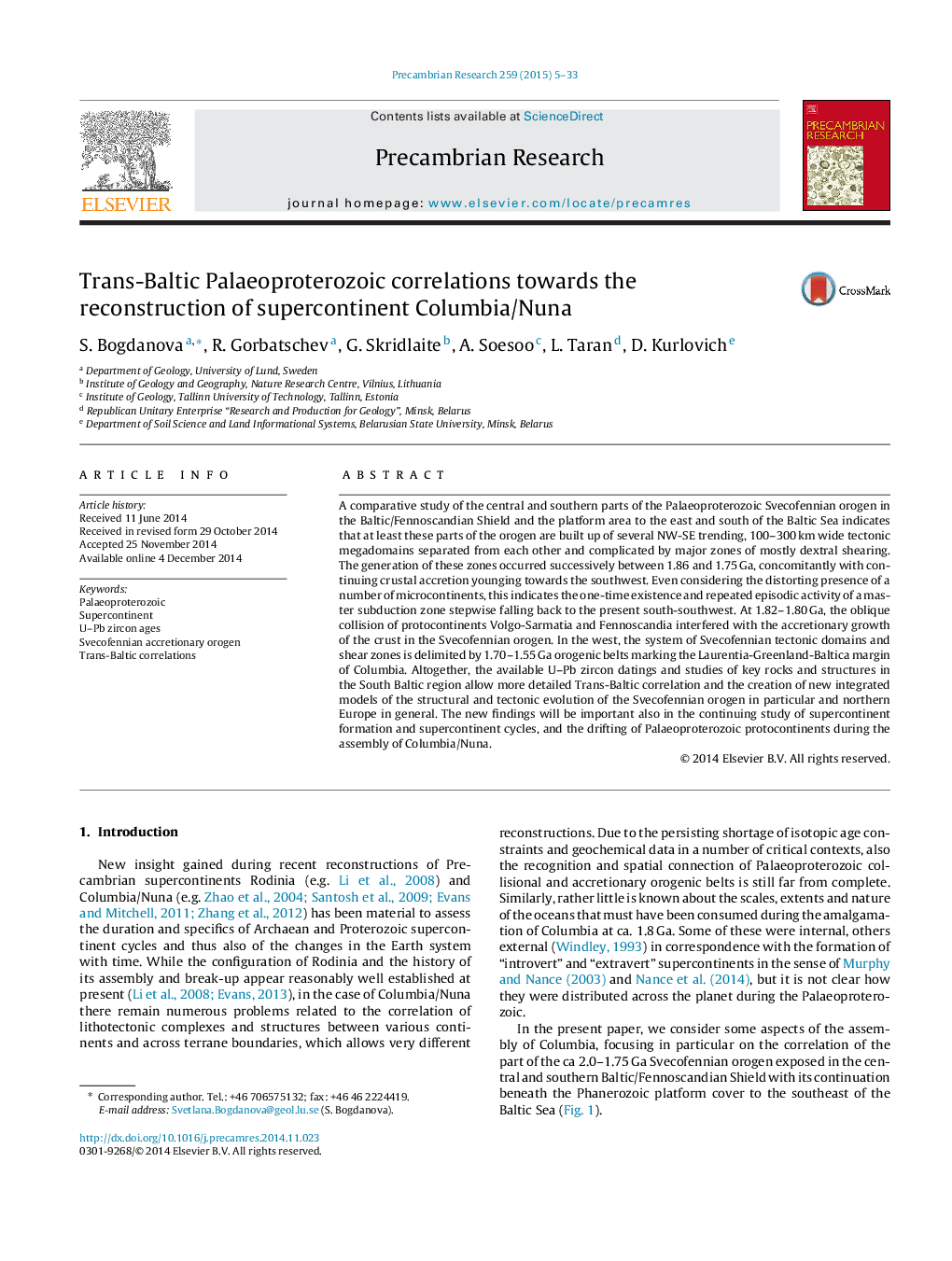| کد مقاله | کد نشریه | سال انتشار | مقاله انگلیسی | نسخه تمام متن |
|---|---|---|---|---|
| 4722826 | 1639616 | 2015 | 29 صفحه PDF | دانلود رایگان |

• Trans-Baltic correlation shapes a new image of the Proterozoic Svecofennian orogen.
• An array of NW-SE trending, southwards younging domains was formed at 1.86–1.75 Ga.
• The accretion was interfered by the Fenno-Sarmatian collision at 1.82–1.80 Ga.
• Continuing accretion and overall NS compression created complicating shear zones.
• A Columbia active margin overlapped the Svecofennides at 1.70–1.55 Ga.
A comparative study of the central and southern parts of the Palaeoproterozoic Svecofennian orogen in the Baltic/Fennoscandian Shield and the platform area to the east and south of the Baltic Sea indicates that at least these parts of the orogen are built up of several NW-SE trending, 100–300 km wide tectonic megadomains separated from each other and complicated by major zones of mostly dextral shearing. The generation of these zones occurred successively between 1.86 and 1.75 Ga, concomitantly with continuing crustal accretion younging towards the southwest. Even considering the distorting presence of a number of microcontinents, this indicates the one-time existence and repeated episodic activity of a master subduction zone stepwise falling back to the present south-southwest. At 1.82–1.80 Ga, the oblique collision of protocontinents Volgo-Sarmatia and Fennoscandia interfered with the accretionary growth of the crust in the Svecofennian orogen. In the west, the system of Svecofennian tectonic domains and shear zones is delimited by 1.70–1.55 Ga orogenic belts marking the Laurentia-Greenland-Baltica margin of Columbia. Altogether, the available U–Pb zircon datings and studies of key rocks and structures in the South Baltic region allow more detailed Trans-Baltic correlation and the creation of new integrated models of the structural and tectonic evolution of the Svecofennian orogen in particular and northern Europe in general. The new findings will be important also in the continuing study of supercontinent formation and supercontinent cycles, and the drifting of Palaeoproterozoic protocontinents during the assembly of Columbia/Nuna.
Figure optionsDownload as PowerPoint slide
Journal: Precambrian Research - Volume 259, April 2015, Pages 5–33